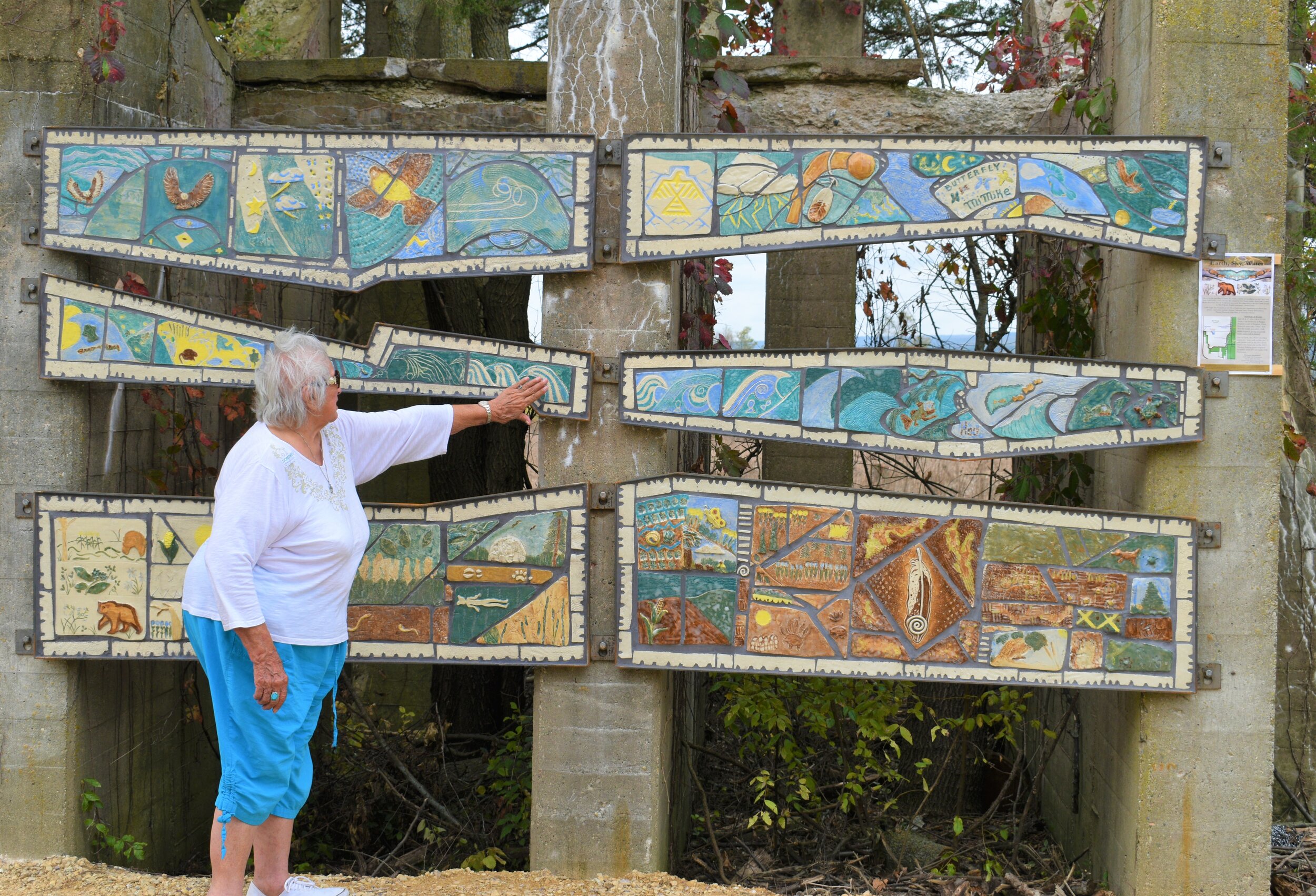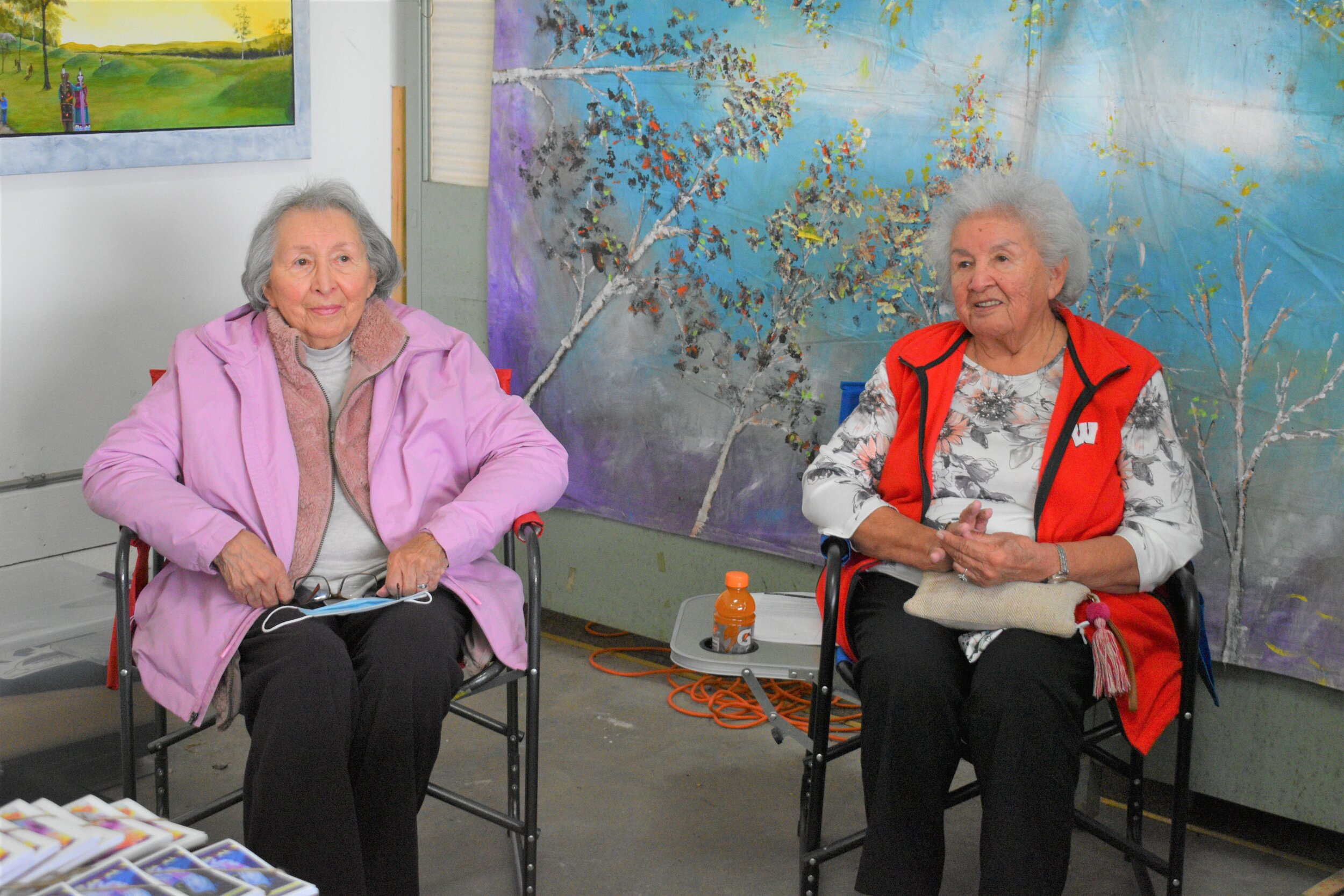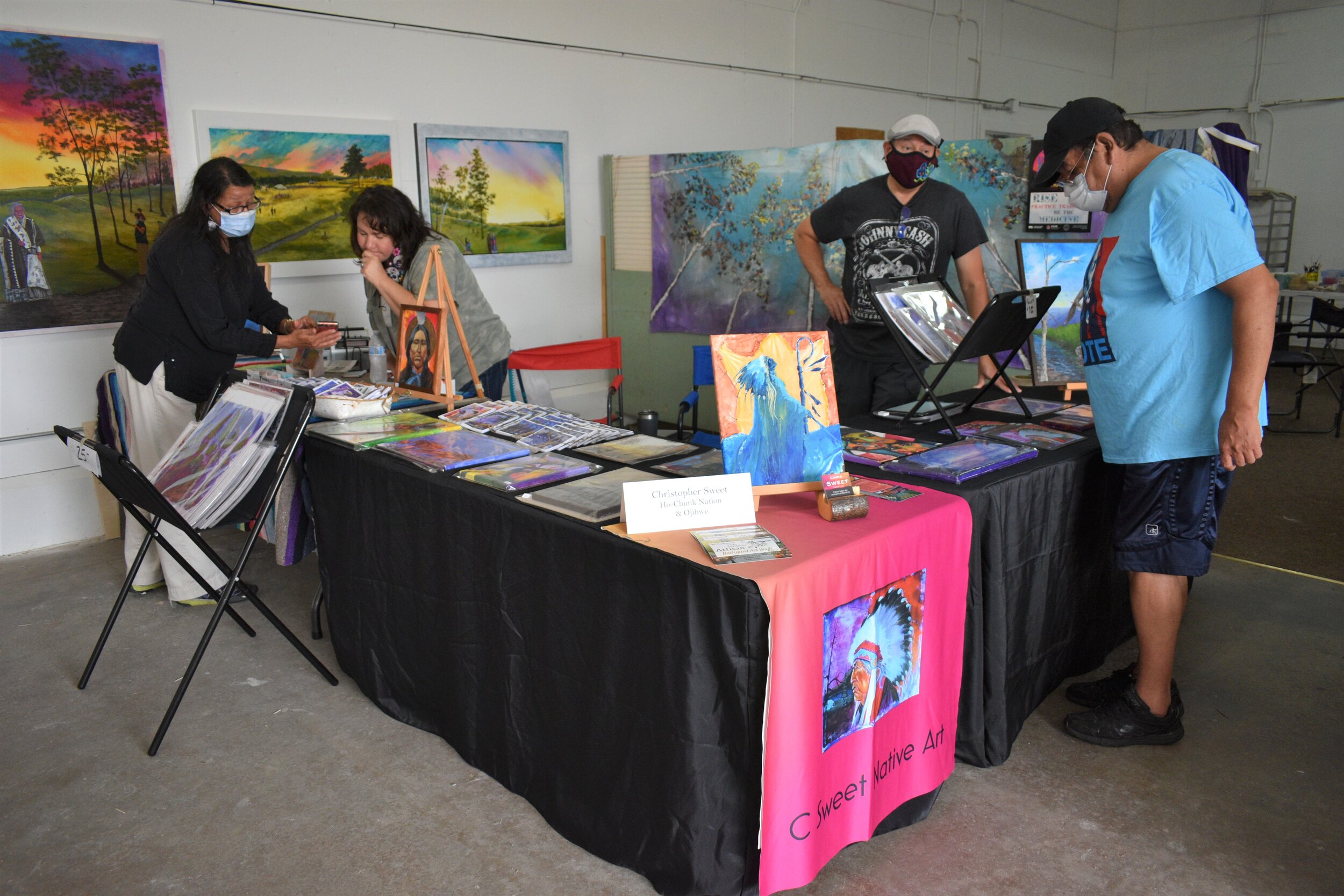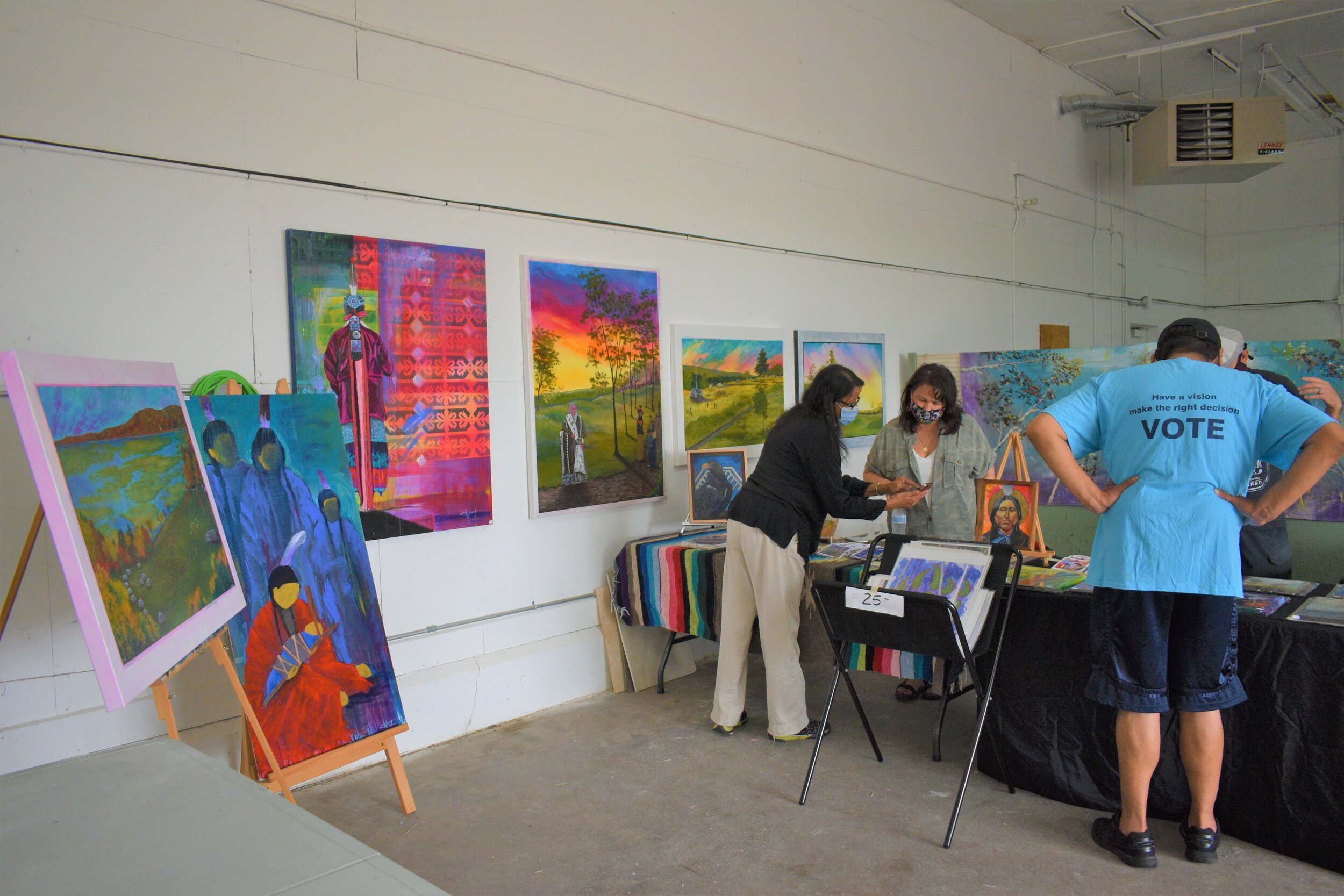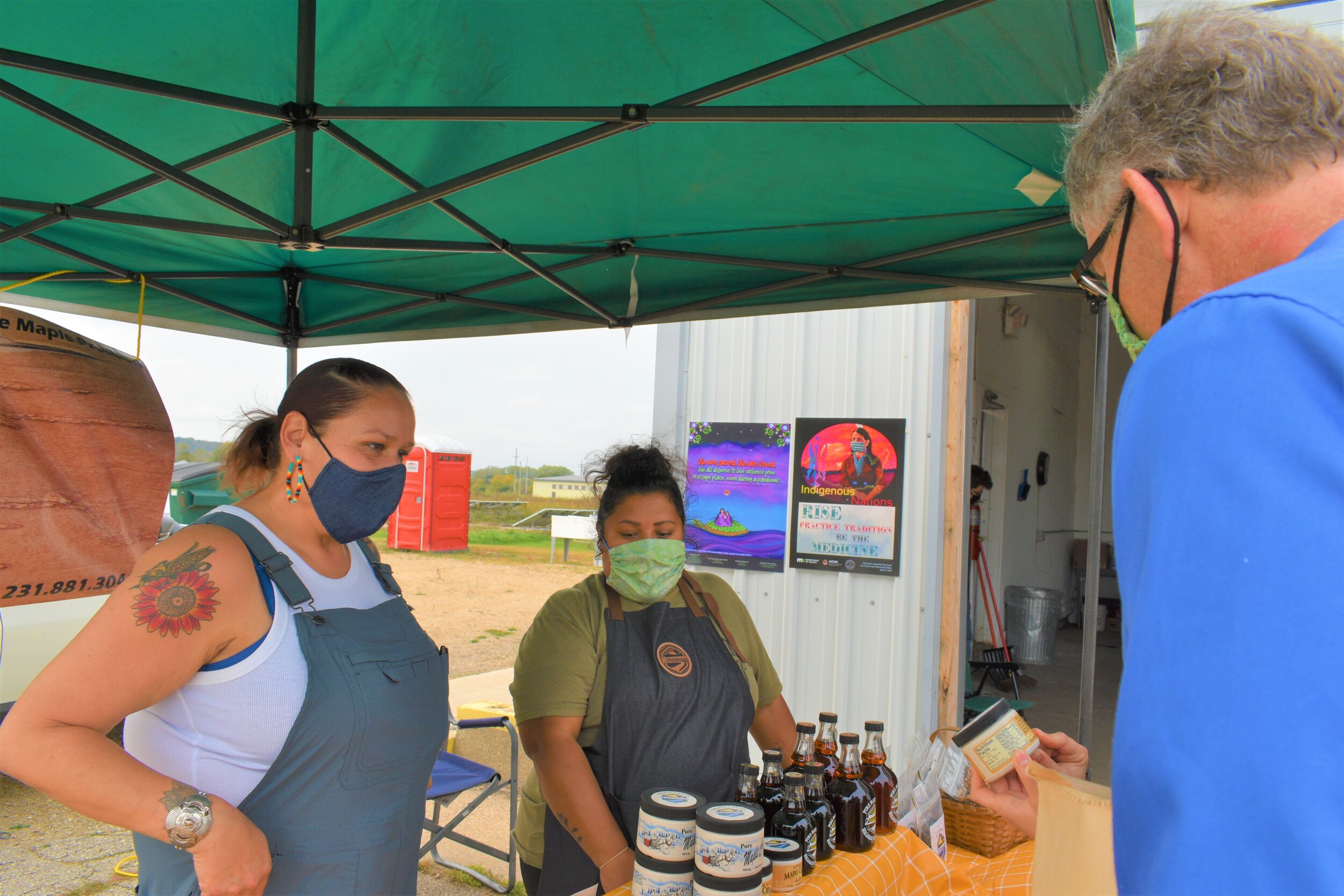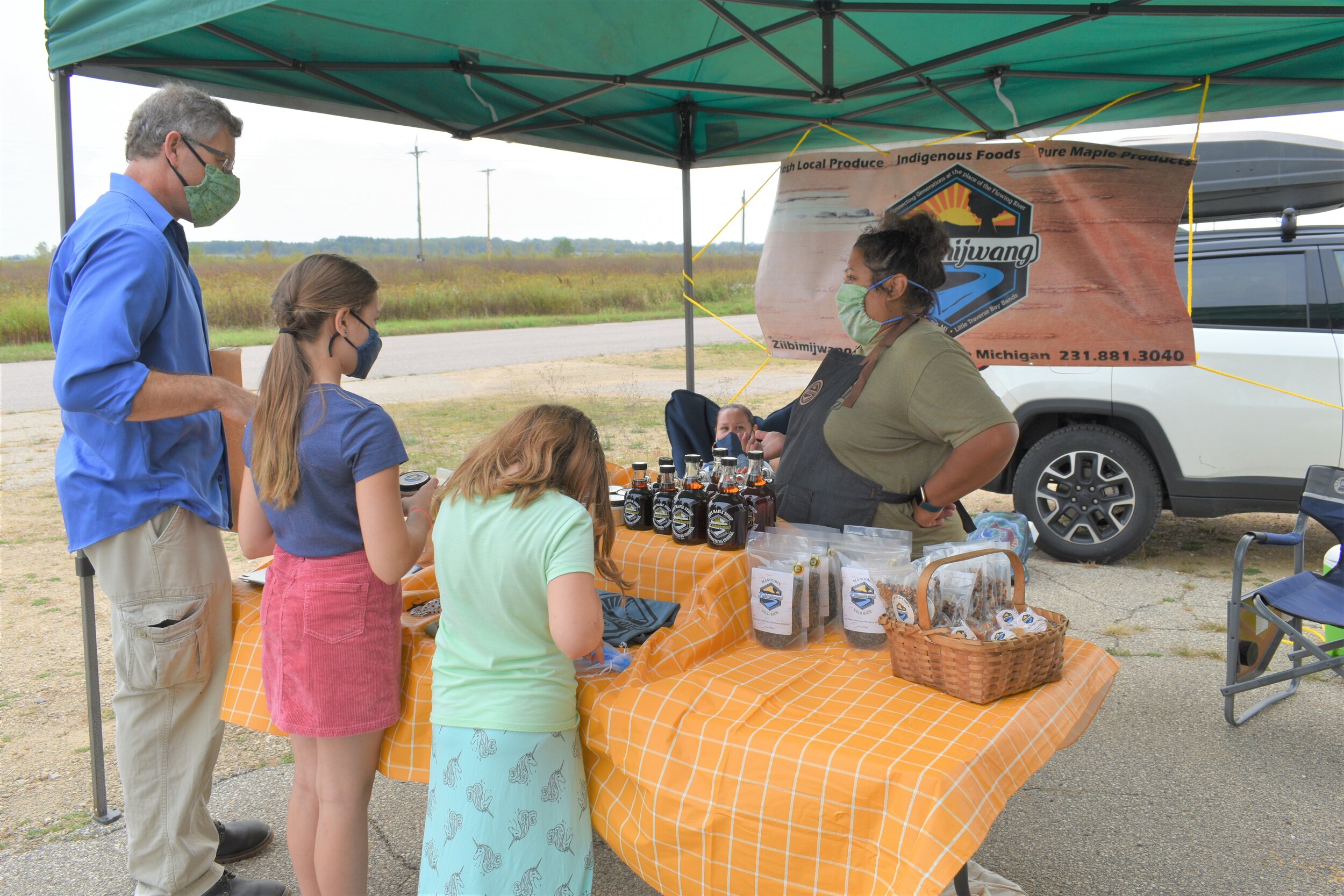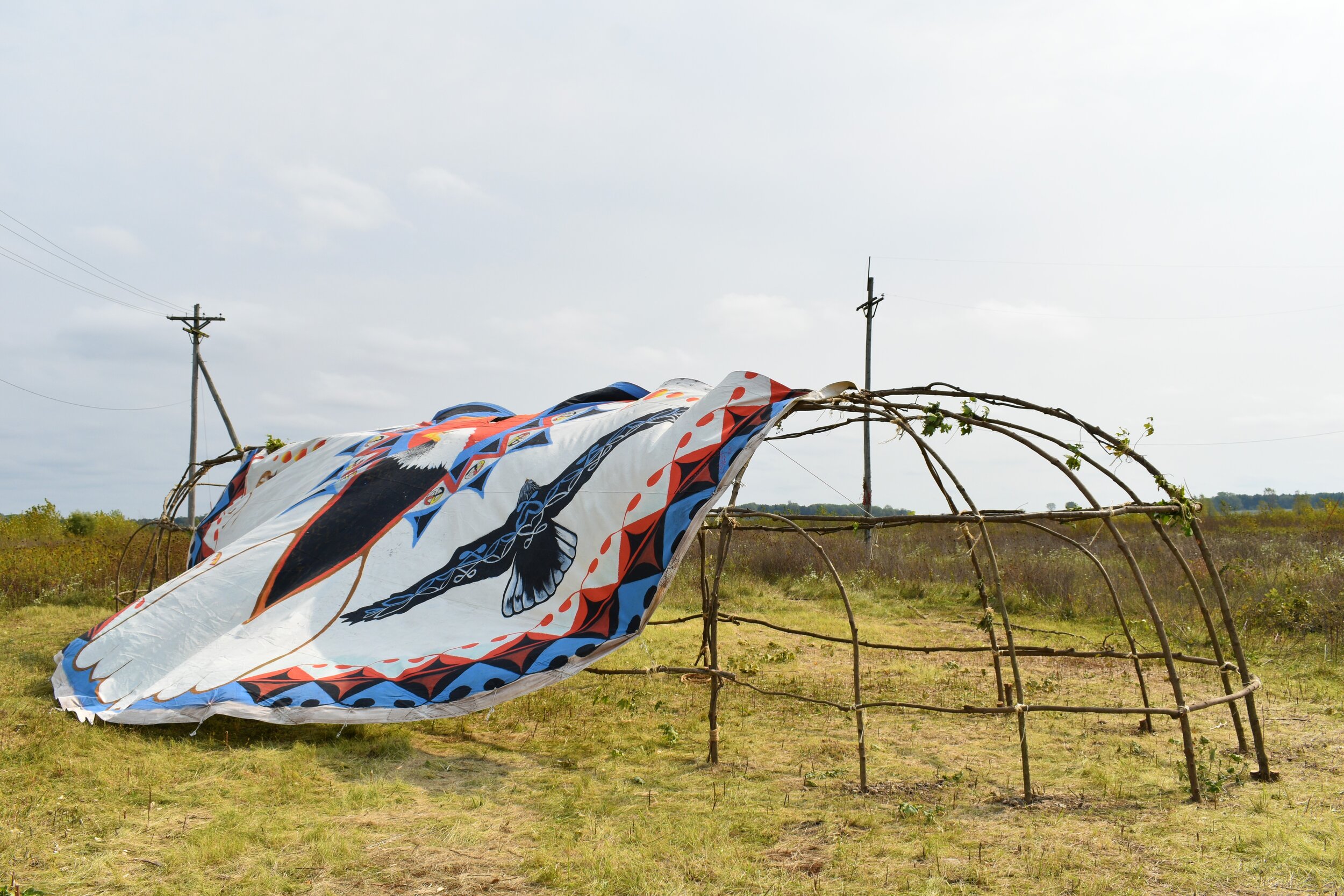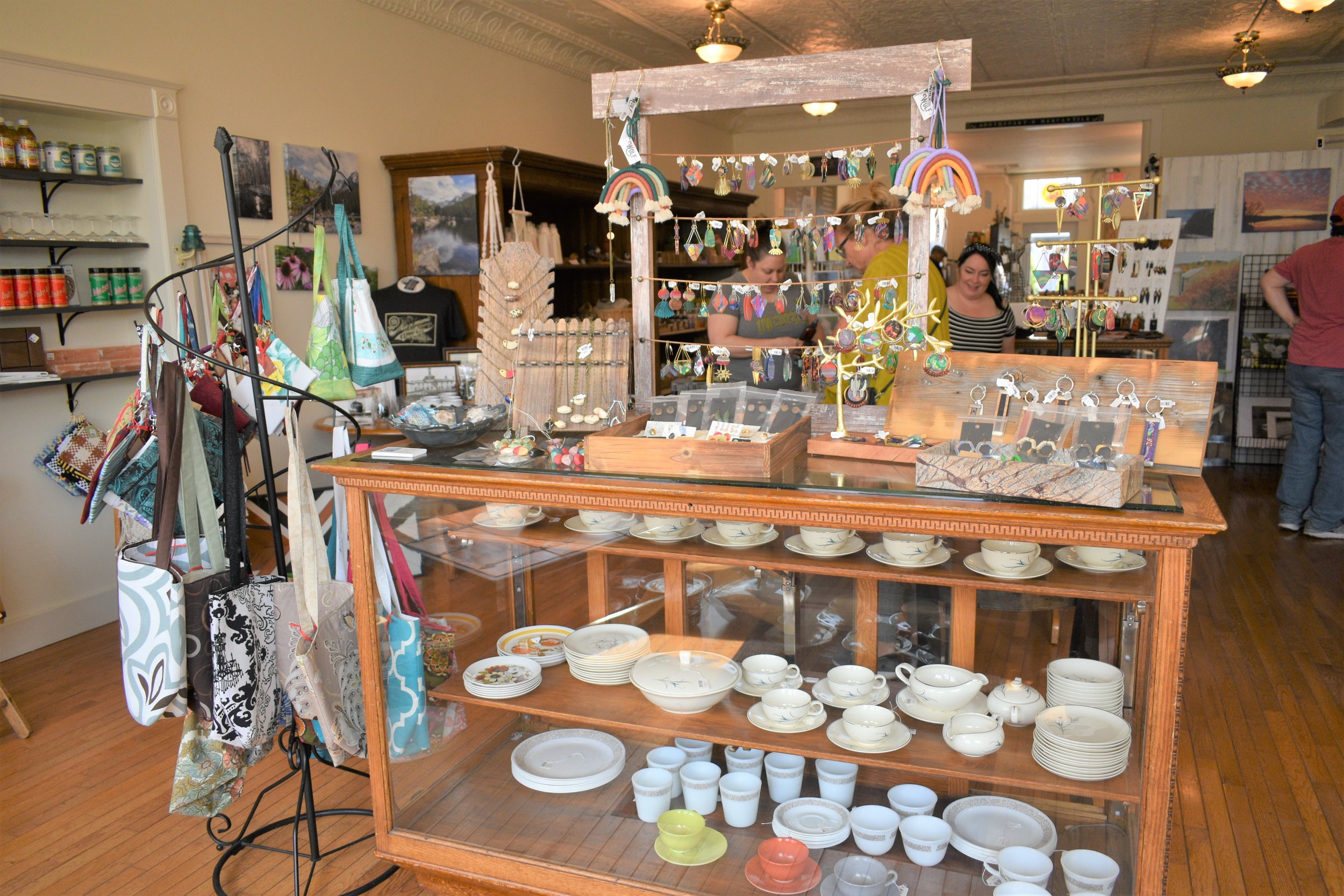Little Eagle Arts Foundation unveils Hoocąk mural at Maa Wákąčąk
Once hailed as the world’s largest ammunition plant, and having been turned back over to its rightful caretakers, the Hoocąk (Ho-Chunk), the Badger Ammunition plant recently played host to the revealing of a cultural mural.
The mural titled “Earth, Sky, Water”, a cooperative art project, was placed on the Great Sauk Trail that skirts the property on its eastern edge. The mural has been permanently installed to repurposed stem walls on the Great Sauk State Trail, and the opportunity was afforded, intended as a gift of appreciation and in recognition for the generous donation the Hoocąk Nation gave to complete the trail.
Renamed Maa Wákąčąk (Holy land), the tribe has realized, for a lack of better terms, a cultural rebirth. Prairie and wildlife restoration have been in the forefront in the Hoocąk Nation’s plan for the property, and a recently cooperative art project led by the Little Eagle Arts Foundation.
With the Great Sauk Trail Southeast of Maa Wákąčąk, and in the general area the indigenous lands of the Hoocąk, it was fitting that a mural depicting the sacredness of the land to the Hoocąk people be incorporated on the trail.
A collaborated effort, the Eli Leonard, Joann Jones, Nela Stacey, Connie Lonetree, and Lenore Sweet families all worked on contributing tiles for the mural. A collaboration that took several weeks that included help from visiting Artist in Residence Muneer Bahauddeen and Project Apprentice Martina Patterson.
Leading up to the weekend reveal, Hoocąk (Ho-Chunk) elders Lenore Sweet and Connie Lonetree sat down with Madison’s WKOW’s Nick Buffo. Nick, an anchor for the stations Wake Up Wisconsin morning show that aired this past Friday, had a chance to get a feel for how important the mural is to them.
“I appreciate being asked and proud to share a lot of information that we have,” tribal elder Lenore Sweet said with a smile. Lenore said that she and her sister Connie have a lot of information being elders and having lived some life.
She recalled that their father was born in 1890, and acknowledged he brought a lot of tradition and heritage and information to them both, saying “We grew up with it. Our mother was born in 1912/1910 somewhere in there, and she was a traditional, very traditional. I remember her parents, and they had a lot of activities that were from their childhood. That's how they lived, in traditional ways every day. The way we lived in those days was so different.”
She said that growing up, her family had natural foods available and stressed what they ate then is much different from their diet now. “You know, everything comes out of the freezer and from mass production and so forth. I think it's changed a lot of our health issues, but I think it also affects our environment the way things are grown, you know it's not green. It's too bad we can't go back to more of that.”
Lenore feels that the mural will highlight the fact that Native Americans are still here. “I think a lot of people think that we're still living out in the woods someplace in teepees and little round houses, but we're out here in society. They need to be aware that we're here. And we are doing things, and we're helping with the environment. Our tribe keeps us going healthier.”
Connie also felt appreciated, saying she feels honored that she and her sister were asked by Buffo to share their beliefs, ideas, and the Hoocąk (Ho-Chunk) connection to Maa Wákąčąk. Connie, echoing her sister that the Hoocąk are still around said, “We're very, very active. I think the reason is, like Lenore said, that we were brought up on healthy foods. Our dad was a cook. He was kind of talented in all kinds of things. He was a baker, he cooked for us. He used to make homemade bread for us, so we were brought up on things like oatmeal. I'm talking about the way we were brought up, the way we were fed and stuff. We'd go out in the countryside and pick milkweed and asparagus. I don't know if a lot of people know about milkweed,” Connie chuckled.
Around 1 pm this past Sunday, tribal members and community members gathered and watched as the mural was unveiled. The mural now stands as a place for trail goers to stop and learn about the Hoocąk connection to the land they see before them.
Little Eagle Arts Foundation (LEAF) Founder and Director Melanie Tallmadge-Sainz said there were many people involved in the success of this project, a project that involved both Hoocąk tribal members and collaborative work from outside the tribe. It is important to note The River Arts Inc. of Prairie du Sac chose the Little Eagle Arts Foundation to design and create the mural.
Speaking on the mural Melanie said, that the Hoocąk clan affiliation with the natural world is divided according to the Earth clan, sky clan and water clan, making clear the choice of content.
To view the piece WKOW aired visit; http://bit.ly/HochunkMural1
To view the story that aired on WISC visit; http://bit.ly/HoChunkMural2
For a previous story on the mural visit; https://bit.ly/Ho-ChunkLandGreatSaukTrail

